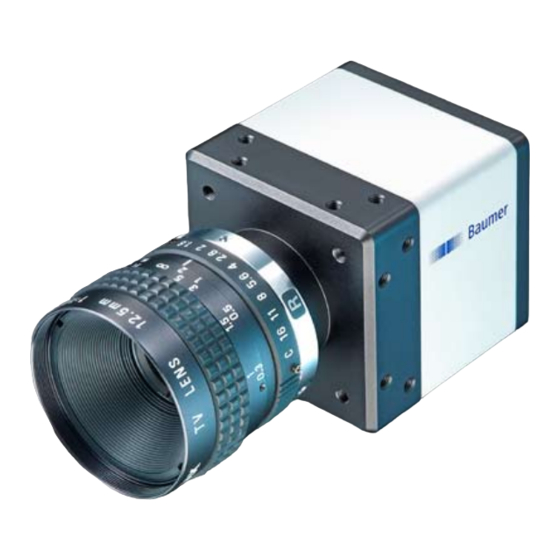Baumer SXC80c Panduan Pengguna - Halaman 32
Jelajahi secara online atau unduh pdf Panduan Pengguna untuk Kamera Digital Baumer SXC80c. Baumer SXC80c 48 halaman. Sxc series
cameralink cameras with truesense imaging
sensors
Juga untuk Baumer SXC80c: Panduan Memulai Cepat (2 halaman)

Figure 32 ►
Distinction of "hot" and
"cold" pixels within the
recorded image.
Figure 33 ►
Charge quantity of "hot"
and "cold" pixels com-
pared
with
"normal"
pixels.
Figure 34 ►
Schematic diagram of
the Baumer pixel
correction.
32
8.4. Pixel Correction
8.4.1.
General information
A certain probability for abnormal pixels - the so-called defect pixels - applies to the sen-
sors of all manufacturers. The charge quantity on these pixels is not linear-dependent on
the exposure time.
The occurrence of these defect pixels is unavoidable and intrinsic to the manufacturing
and aging process of the sensors.
The operation of the camera is not affected by these pixels. They only appear as brighter
(warm pixel) or darker (cold pixel) spot in the recorded image.
Charge quantity
„Warm Pixel"
Charge quantity
„Cold Pixel"
8.4.2.
Correction Algorithm
On monochrome cameras of the Baumer SXC series, the problem of defect pixels is
solved as follows:
▪
Possible defect pixels are identified during the production process of the camera.
▪
The coordinates of these pixels are stored in the factory settings of the camera (see
4.4.3. Defectpixellist).
▪
Once the sensor readout is completed, correction takes place:
▪
Before any other processing, the values of the neighboring pixels on the left and the
right side of the defect pixel, will be read out
▪
Then the average value of these 2 pixels is determined
▪
Finally, the value of the defect pixel is substituted by the previously determined
average value
Defect Pixel
Warm Pixel
Cold Pixel
Charge quantity
Average Value
„Normal Pixel"
Corrected Pixel
